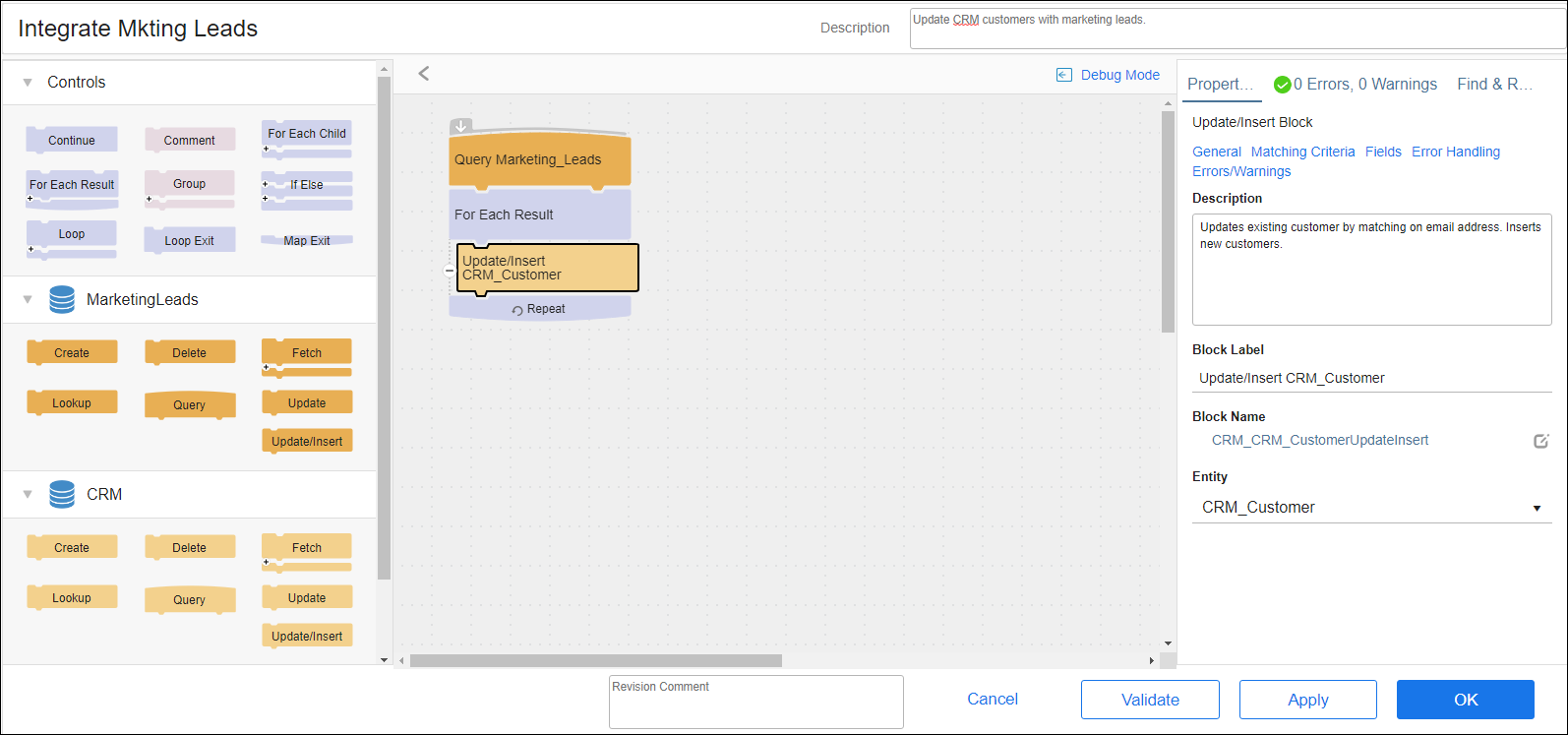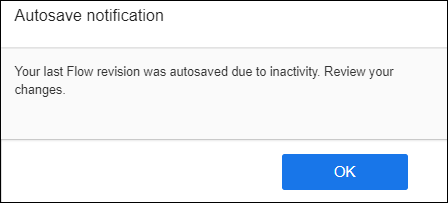TIBCO Cloud™ Integration - Connect Flows
A flow is a visual representation of the instructions needed to integrate your data. Sets of one or more TIBCO Cloud™ Integration - Connect flows are used in On schedule and On event apps to retrieve and manipulate data. Data replication apps do not use flows because they simply copy data from one data source to another with no filtering or other data manipulation.
Create visual flows by pulling the elements you need into the flow workspace. When creating Integration, Message, or Request/Reply flows, the Create Flow page opens to the empty workspace. Use the Connection panel on the left to select one or more connections. For each connection, there is a series of operation blocks you can use to process data for that connection.
The tabs on the right side of the workspace provide additional information about the selected block or the flow.
- Properties — Displays properties associated with the selected block. See Working With Blocks.
- Errors, Warnings — Displays a list of errors and warnings for the flow. Select the Error or Warning to go to the appropriate block. See Block And Flow Errors And Warnings
- Find & Replace — Use the Find & Replace tab on the flow workspace to update text in your flow blocks. See Find And Replace Block Text.
Flow Types
TIBCO Cloud™ Integration - Connect provides the ability to create flows to perform specific tasks. The types of flows are:
- Integration Flow — Integrate data from a source to one or more datastores.
- Message Flow — Process inbound event messages in real time from another system to one or more target datastores.
- Request/Reply Flow — Process inbound messages from another system to one or more target datastores and provide a reply to the sender.
Names In flows
Field or entity names that contain special characters may display in TIBCO Cloud™ Integration - Connect differently than in the original data. A special character is any character other than A-Z, a-z, 0-9, or underscore, This does not affect your final output, but if you map these fields or entities, use the names as they appear in TIBCO Cloud™ Integration - Connect.
Autosave
If you leave the Flow designer open and idle for 25 minutes, a pop-up warns you that you are about to be logged out and asks you if you want to stay logged into the system. If you do not respond, after 5 minutes the system automatically saves the flow and logs you out of TIBCO Cloud™ Integration. The revision of the flow that is autosaved contains all of the changes made to the flow up to the time you were logged out. It is marked in the Revisions dialog with the comment: Flow autosaved due to an inactivity logout. The last revision of the flow with this comment represents the latest autosaved flow.
You can choose to revert to a prior revision of the flow using the Revisions dialog. See Flow Revisions for more information on accessing different revisions of your flow.

